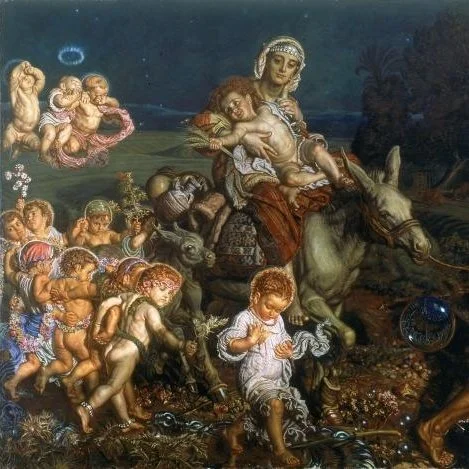It was with unbridled glee that Irish media outlets reported this week that the numbers of identified Catholics had fallen by 10% since 2016, from 79% to 69%, clearly a situation made worse by the calamity of the poorly organised World Meeting of Families in 2018, which was an incident that put the Irish church’s incompetence onto a world scale.
The same media that regularly tells Catholics that we have to be stripped of our schools, stripped of our buildings and even stripped of our sacraments over past and imagined slights never manages to make the same criticisms of the so called ‘Church of Ireland’, which is by any measure far wealthier and any measure far more a product of historical injustices.
While Catholicism fell sharply in new Census figures, the Church of Ireland and Orthodox Churches have benefitted greatly from the country’s policies of encouraging young natives to emigrate and for economic migrants to make their homes here.
According to the new Census figures, the numbers of Catholics fell from 3,696,644 (79%) in 2016 to 3,515,861 (69%) in 2022. No doubt that the church’s willingness to go along with Fine Gael’s often violent lockdown against churches during the past 2 years will not have helped.
The Church of Ireland numbers managed to stay static at 124,749 while the numbers of Orthodox swelled to 100,000. The overall numbers of Protestant increased by 1.7%, with numbers from Brazil and Romania amongst others helping these statistics. Albania and Georgia remain the largest official sources of Asylum Seekers into the state, these (along with Romania) have helped the surge in numbers of Orthodox.
There are now also 81,000 Muslims living in Ireland.
The most interesting part of the Census regarding this is the proportion of these religions that are Irish or non Irish.
Despite constant claims that the ‘New Irish’ (a term that seems to still only be in usage within the church) were going to reinvigorate the church, the Census tells a very different reality.
Only 6% of Catholics are non Irish.
This is in comparison to the Church of Ireland, where 15% are non Irish. 44% of Muslims are non Irish. 63% of Orthodox are non Irish.
We should also emphasise here that ‘non Irish’ refers to Citizenship and not ethnicity.
The statistics revealed that Mayo was the most Catholic place in Ireland and Dublin had the smallest percentage, which of course Irish ‘journalists’ interpreted as a sign of irreligiousness in Dublin. A simpler explanation is that Dublin has a far higher percentage of migrants and migrants make up 22% of all irreligious people. There is almost always a direct correlation between religion and immigration in each county.
It should be mentioned that although the Catholic Church was singled out for being in some sort of decline since the last census, it is Ireland itself that is in decline, unless you measure it in purely economic terms. The numbers of non Irish increased by 100,000. The numbers of no nationalities doubled due to the state’s policy of allowing people to rip up passports upon entering Dublin Airport in order to claim asylum, regardless of where they originated from. The percentage of people who are only Irish on their passport fell by 3%.
The numbers of Polish and Lithuanians, who were supposed to bring about a new springtime in the Irish church, have both fallen significantly since the last Census, although many young people from both nationalities are increasingly becoming more involved in the church.
Elsewhere, the apparent decline of the Irish Catholic Church should be paired with the struggles of the state as a whole. The numbers of Irish speakers declined by 3% since the previous census. Births have declined each year since 2010. There was a 4% fall in the numbers of people aged between 25-39. The numbers of single young people increased by 2%, the numbers of married people decreased by 2%.
Not included in the Census, but relevant nonetheless, are the record homeless figures of 12,000 and the fact that 100,000 young people have fled the country to go to Canada or Australia in the last 5 years alone.
These problems of the State are very similar to the churches: struggling to maintain their young people, envisioning a viable future, doing anything other than keeping the lights on.
Lazily claiming that migrants are reinvigorating either church or state is the type of claim by those who rarely stray from Dublin City.
Migrants are getting involved in the church in many places, in many cases without having to be begged like native Irish often have to be. There is no reason however to assume that this will carry into a next generation in a secularised culture.
The Synod Synthesis Report of last year summed up the alienation of those who do not just walk in off the streets ready made to take part after being evangelised elsewhere.
There was unanimous desire for the Church to adopt a more welcoming and inclusive stance towards all, and in doing so reach out especially to those on the margins and those who do not engage regularly. It was stressed that the Church is at its very best when it is close to people’s lives, speaking a language that people understand, and connecting with people amidst their daily struggles. Regarding language itself, some felt that the Irish language and the local customs that surround the language, were not afforded adequate attention in Church circles. Sadly, the view that nothing happens outside of Mass and that much more could be done to develop a sense of community through regular social events and other liturgical services, emerged repeatedly.




There are lots of fake quotes going around.